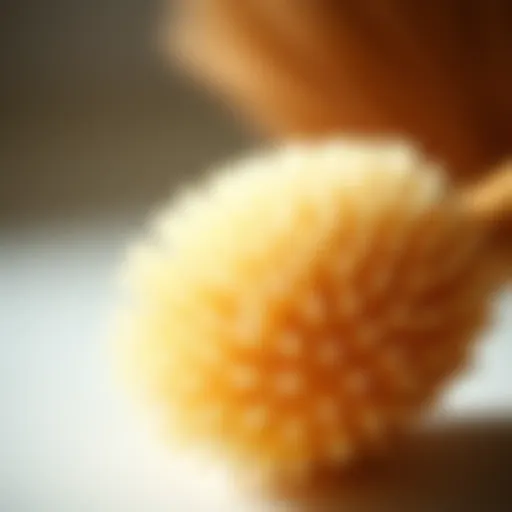The Rise of Fashion Bibs: A Modern Wardrobe Staple


Intro
The fashion bib, once the epitome of functionality in the culinary and work settings, has undergone a remarkable transformation. In today's style-centric society, it stands as a symbol of versatility and flair in personal expression. With its unique blend of history and contemporary design, the bib has transcended its original context to become a fashionable accessory found in wardrobes across the globe. This exploration dives deep into its evolution, uncovering how it shapes current trends and reflects our cultural values.
Clothing Trends
Seasonal Must-Haves
In recent years, the fashion bib has emerged as a seasonal staple, loved for its adaptability. Designers have experimented with various materials, ensuring that the bib can transition from springtime floral prints to wintry solid colors, making it a key piece for layering.
Whether styled casually over a simple tee or paired with a chic blouse, the bib enhances and complements multiple looks. Some might argue this trend is influenced by the rise of sustainability in fashion. Brands are now more cautious about their fabric selections—organic cotton, recycled polyester, and even innovative materials made from waste are surfacing. This not only supports eco-friendly practices but also opens the door for unique textures and designs that pop on social media feeds.
"Fashion has to reflect who you are. And if you wear a bib with confidence, that's what makes it stylish."
— Talented Fashion Designer
Iconic Styles Through Decades
As we trace the evolution of the fashion bib, it becomes clear that it is not a fleeting trend. Each decade has left its mark, showcasing the garment's ability to adapt. For instance:
- 1920s: Initially worn as a functional piece, often in durable fabrics, mainly by workers and artists.
- 1980s: Entered mainstream culture, often seen in bright colors and bold patterns, synonymous with youth and rebellion.
- 2000s: Became an emblem of casual chic, with denim bibs rising to prominence, appealing to both men and women.
- 2020s: Presently, the bib is celebrated in high fashion, observed on runways and in street style alike. Innovations include experimental silhouettes, intricate designs, and layering techniques that appeal to a broad audience.
The generational shifts underscore a fundamental truth about the fashion bib: it is more than a simple garment; it's a canvas for creativity.
Fashion Tips
Styling Essentials for Every Occasion
The versatility of the fashion bib stands out when it comes to styling. No matter if one is dressing for a casual day out or preparing for a more formal event, the bib can be adapted to fit the occasion. Some styling suggestions include:
- Casual Day Out: Pair a lightweight floral bib with high-waisted jeans and sneakers to achieve a relaxed look while staying stylish.
- Office Ready: Opt for a tailored bib in solid colors and wear it over a fitted blouse, accompanied by smart trousers for a polished ensemble.
- Evening Wear: Select a bib with embellishments or unique textures, layered over a sleek dress to add an element of surprise during a night out.
Accessorizing to Elevate Your Look
Accessorizing plays a crucial role in emphasizing the fashion bib's appeal. A few tips for elevating your overall look include:
- Bags: Choose a structured handbag or a trendy crossbody bag to create a balanced silhouette.
- Footwear: Ankle boots or sleek loafers can polish off a look and add a touch of sophistication.
- Jewelry: Layer dainty necklaces or bold earrings to create visual interest without overshadowing the bib itself.
By embracing these fashion tips, wearers can fully utilize the fashion bib's potential, making it a go-to item throughout the year.
For more insights into fashion, visit Wikipedia Fashion or explore communities on reddit. The evolution of the fashion bib reflects the bigger picture of changing wardrobes, cultural influences, and sustainable practices. It invites individuals to express their unique style while embracing the trends of yesterday and today.
Historical Context of the Fashion Bib
The fashion bib has traveled a winding road through time, transitioning from a practical garment to a beloved sartorial statement. Understanding this evolution is essential, as it reveals not only the changing aesthetics but also the shifting societal values surrounding fashion. The historical context of the fashion bib offers insights into why this unique piece is more than just an accessory—it's a reflection of cultural sentiment and functional necessity.
Origins of the Bib
The roots of the bib can be traced back to utilitarian clothing worn by laborers and farmers centuries ago. Initially designed to protect garments from dirt and wear during work, the bib's practical form catered specifically to the needs of those engaged in hands-on tasks. In the 14th century, for instance, bibs emerged as part of the attire for men and women alike while they participated in their daily labor—be it farming or artisanal crafts. They signified a sense of function over flair, a striking contrast to today's fashion-forward interpretations.
As societies evolved, so did the perception of the bib. By the 19th century, when the Industrial Revolution was in full swing, the garment began to perfuse popular culture through various forms of clothing, including the apron motif prevalent in household wear. This period saw the bib morphing into something more than mere practicality, fostering a connection to domestic life and gender roles.
Evolution Through the Decades
The 20th century marked the real transformation of the fashion bib. In the 1920s and 30s, as women began to step into more independent roles, the bib found its way into the realm of high fashion. Designers began to experiment with colors and patterns, breaking away from the monotony of utilitarian use. Fast forward to the 1970s, when designers like Yves Saint Laurent took the bib and breathed new life into it with the introduction of the "tuxedo bib" for women, challenging norms and redefining gendered clothing.
In contemporary fashion, the bib is recognized as a versatile piece that spans from streetwear to haute couture, adapting seamlessly to varied aesthetics.Street style icons often sport unique bib designs that catch the eye, demonstrating that this formerly practical garment has been fully embraced by fashion enthusiasts.
Cultural Significance Across Regions
The cultural significance of the fashion bib varies widely across different regions. In Europe, particularly in France and Italy, the bib is often regarded as an emblem of chic living and casual refinement. Think of Parisian cafes where artists and intellectuals gather, their favorite bibs adding flair to their effortless style. In contrast, in parts of Asia, the bib has often retained its practical roots, with colorful, traditional designs reflecting local craftsmanship.
"The bib transcends borders, adopting diverse interpretations while maintaining its core value as a practical, yet stylish piece."
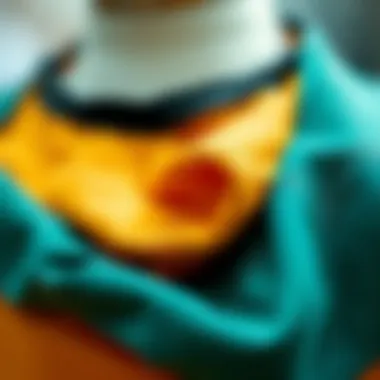
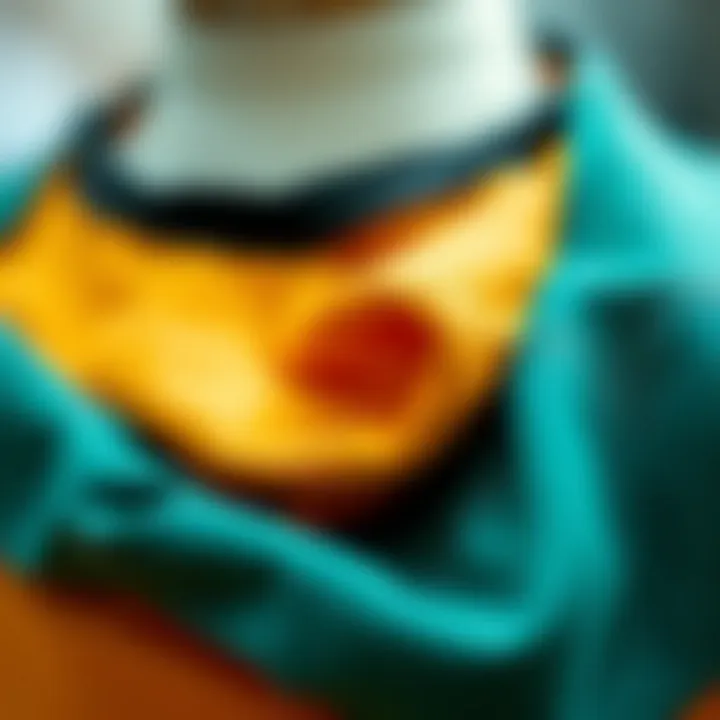
Moreover, the recent emphasis on sustainability in fashion has sparked innovative interpretations of the bib across cultures. By integrating eco-friendly practices and heritage textiles, designers are crafting fashion bibs that are not just stylish but also steeped in cultural lineage. This evolution showcases a growing awareness and appreciation for the stories woven into the fabric of the fashion world.
Understanding the historical context of the fashion bib is crucial for appreciating its role in modern wardrobes. It serves as a testament to how clothing evolves with society, adapting and reshaping itself to fit new narratives while always holding a piece of its traditional significance.
Design Features of Modern Fashion Bibs
The design features of modern fashion bibs play a significant role in their rise as a staple in contemporary wardrobes. Examining these features allows us not only to appreciate the craftsmanship behind these garments, but also to understand how they can enhance one’s personal style while providing comfort and practicality. The choice of fabric, cuts, and color trends intricately layer into what makes a fashion bib a unique wardrobe essential. Below, we will explore these different aspects in detail.
Types of Fabric Used
Silks and Synthetics
Silk and synthetic materials have become quite popular when it comes to fashion bibs. The luxurious feel of silk against the skin is one of its primary appeals, making any bib made from silk a much-coveted item. It drapes elegantly, giving it an upscale look that can elevate an outfit in an instant. Synthetic fabrics, on the other hand, might be chosen for their durability and easy-care properties. Often blended with silk to enhance its performance, these fabrics might resist creasing and, therefore, are ideal for busy fashion lovers.
One unique feature of silk is its natural shine, which adds a touch of glamour. Conversely, synthetic blends can provide vibrant color retention. However, silk demands a bit more care—hand-washing or delicate cycles are a must, while synthetics can typically withstand the rigors of machine cleaning.
Denim and Cotton
Denim and cotton are staples in modern fashion, and their inclusion in fashion bibs speaks volumes about comfort and style. The sturdiness of denim makes it an excellent choice for those seeking durability without sacrificing style. Cotton, with its breathability, offers a relaxed vibe, perfect for casual outings. The blend of these materials can also result in unique textures and finishes that set certain bibs apart from the rest.
The main feature of denim is its ruggedly stylish appearance which adds character to any outfit. Meanwhile, cotton's softness contributes to comfort, making it ideal for wear throughout the day. On the flip side, denim may be heavier and less forgiving in hot weather, while cotton may lack the same durability as a denim bib.
Eco-Friendly Materials
With growing concerns about sustainability, eco-friendly materials are taking center stage in the fashion industry, including bib designs. Fabrics made from organic cotton, Tencel, or recycled fibers are becoming more mainstream. These materials not only contribute to reducing environmental impact but also often come with natural texture and quality. By opting for these alternatives, consumers support a more sustainable approach to fashion.
Eco-friendly materials tend to be soft and breathable, enhancing comfort without compromising style. One major benefit is their lesser impact on the environment during production. An obstacle, however, is that they can sometimes be harder to find or slightly more expensive, but for many, the ethical choice balances out the cost and effort.
Cut and Style Variations
Traditional Styles
The traditional styles of fashion bibs draw heavily from their utilitarian roots, characterized by structured lines and classic cuts. These styles often feature adjustable straps and a fitted bodice that can create flattering silhouettes. They evoke a sense of nostalgia while remaining practical and stylish.
The key characteristic of traditional bibs is their timeless design, suitable for various occasions. Many people appreciate these figures because they can be worn by individuals of different body types. However, they might lack the versatility that modern cuts offer, making them potentially less intriguing for some fashion-forward individuals.
Contemporary Cuts
Contemporary cuts bring innovation and flair to the fashion bib scene. Emphasizing asymmetry, unique hemlines, and varied strap designs, these modern interpretations capture the current aesthetic while allowing for personalized expression. They are often designed to cater to the demands of modern life, reclaming the bib as an essential piece for both function and style.
The appeal of these contemporary cuts lies in their delectate balance of form and function, allowing for easy transitioning from day to night. Yet, their sometimes experimental nature may require a more proactive styling approach, which could be a con for those favoring simplicity.
Layered and Asymmetrical Design
Layered and asymmetrical designs introduce a playful element to fashion bibs, adding depth and visual interest. These designs can range from layered fabrics that create a dynamic silhouette to bibs with intentionally uneven hems that provoke curiosity and intrigue.
The characteristic of these designs lies in their ability to stand out. They challenge conventional styling norms, allowing wearers to make bold statements. However, styling these bibs can be tricky; they require thoughtful pairing with other garments to prevent overpowering an outfit or looking overly complicated.
Color Trends in Fashion Bibs
Earthy Tones and Neutrals
Earthy tones and neutral colors have carved a niche in contemporary fashion bib designs. Heavily influenced by nature, shades like terracotta, olive green, and sandy beige have become synonymous with a relaxed, organic style. These hues are not just visually appealing but are also incredibly versatile, pairing well with a myriad of complementary colors.
The main advantage of such colors is their ability to seamlessly integrate into a wardrobe. They evoke a sense of calm and stability, fitting in comfortably for both casual and formal settings. But their understated nature can also lead to a less impactful statement compared to bolder shades, which might not cater to those seeking attention-grabbing pieces.
Bold and Vibrant Colors
On the other hand, bold and vibrant colors are making a strong push in fashion bibs, expressing enthusiasm and individuality. Bright reds, electric blues, and vivid yellows draw the eye and make an immediate statement. This trend allows wearers to channel confidence and creativity in their attire.
The charm of bold colors is rooted in their ability to lift an outfit, infusing energy and excitement. However, they do necessitate a more careful styling approach to avoid clashing with other garments, which can be tricky for some.
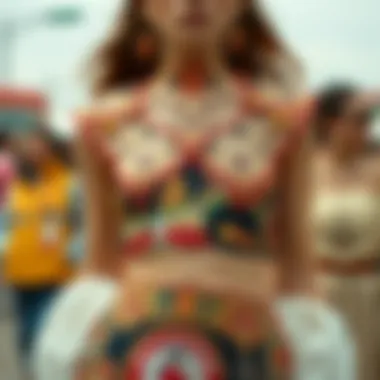
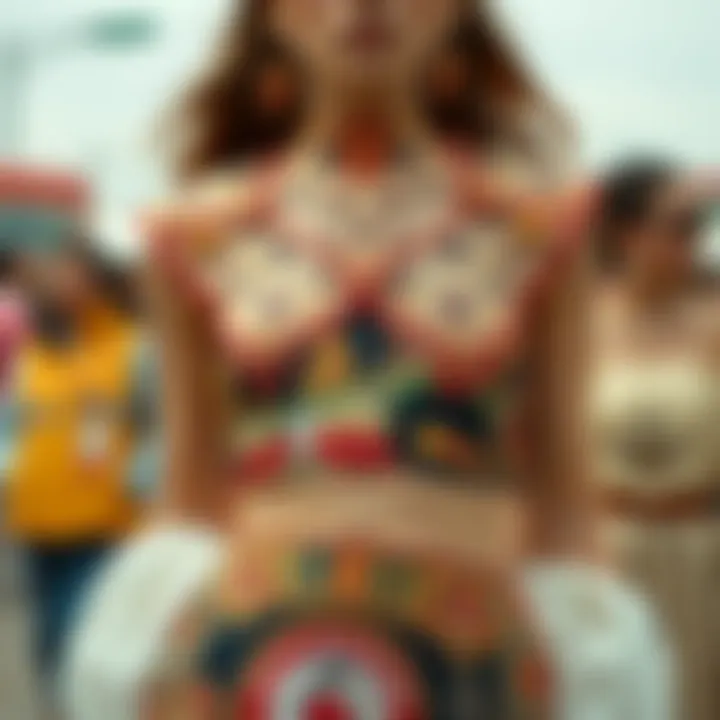
Patterns and Textures
Patterns and textures are where the magic truly happens in fashion bibs. Floral prints, stripes, and even abstract designs add layers of personality, allowing the wearer to express their unique flair. Textured fabrics can elevate the bib, providing tactile interest that captures attention and invites touch.
The strength of patterns is their engagement with the eye, keeping outfits lively and playful. Yet, the challenge lies in selecting patterns that don’t overwhelm the wearer, striking the right balance between fun and sophistication.
Styling Tips for Fashion Bibs
When it comes to fashion, few pieces offer the versatility of the fashion bib. This adaptable garment can serve multiple purposes—from casual outings to more refined events. Therefore, knowing how to properly style a bib can make all the difference. The right accessories and outfit combinations enhance its potential, allowing you to express individuality while staying stylish.
Accessorizing Your Bib
Necklaces and Earrings
In the world of fashion bibs, necklaces and earrings play a crucial role in creating a complete look. A bold statement necklace can draw attention upward, making the face the focal point. The key characteristic of accessories like these is their ability to add personality. A well-chosen piece—like a chunky geometric necklace or delicate earrings—can transform a simple bib into a head-turning outfit. Choosing jewelry that complements the fabric and color of your bib is smart, as it creates a cohesive look. However, over-accessorizing might detract from the bib itself, so keeping it balanced is essential.
Bags and Footwear
Choosing the right bags and footwear is another essential part of styling a fashion bib. Your bag can either elevate the ensemble or clash with it. For example, a structured tote could provide a sharp counterpoint to a soft fabric bib. Footwear also contributes significantly, whether it’s casual sneakers for a laid-back look or high heels to dress things up. Often, people underestimate the impact of shoes on an outfit. The unique feature of this pairing is that it can transition your look from day to night effortlessly, giving you more bang for your buck as you switch from errand running to dinner dates.
Layering Under Outerwear
Layering under outerwear is a practical yet stylish option with fashion bibs. This technique seasonally extends the lifespan of your bib; a lightweight trench coat can add dimension while keeping you warm during cooler months. A bib under an oversized blazer communicates both relaxed elegance and chic sophistication. The adaptability of this method allows for various textures and styles to shine through, ensuring you maintain comfort and warmth. However, one must be cautious about fabric heaviness; thick layers can risk the wearer looking bulky instead of streamlined.
Occasions to Wear a Bib
Casual Day Out
By nature, fashion bibs are excellent for casual day outs. They blend superbly with a relaxed aesthetic, making it easy to maintain comfort while looking put together. One could throw on a bib with jeans and sneakers for a fun day at the park or a trip to the local café. The casual nature allows creativity, where one can experiment with colors and patterns freely—unlike more formal events, you're not tied down with conservative choices.
Formal Events
Contrary to popular belief, a fashion bib can also make a chic statement at formal events. Imagine a sleek black satin bib combined with tailored trousers and stilettos. The key here lies in the bib's fabric and design elements, ensuring it carries an elevated look. Such versatility is an asset; it allows the wearer to break away from traditional evening wear while remaining appropriate. However, one must be cautious about the balance in formal settings; the aim is to remain polished but not overly casual.
Seasonal Festivities
Fashion bibs also find a special place during seasonal festivities. Imagine donning a festive-colored bib for a holiday gathering or an intricate patterned one for a summer barbecue. This versatility lets the bib align with seasonal trends, bringing life into festive outfits. Unique prints or embellishments can bring seasonal cheer, yet remember that comfort should never be sacrificed for style.
Combining with Different Outfits
Pairing with Dresses and Skirts
Pairing a fashion bib with dresses and skirts opens a world of creative possibilities. The right combination allows the bib to shine as a versatile piece rather than a mere accessory. Whether it’s a flowy maxi dress or a fitted pencil skirt, the bib can either serve as a statement piece to complete the look or act as a contrasting feature that adds interest. This adaptability enables various playful textures and patterns to coalesce beautifully, giving an outfit depth.
Integrating with Trousers and Jeans
Integrating fashion bibs with trousers and jeans is one of the easiest ways to achieve a laid-back yet stylish ensemble. Be it high-waisted jeans paired with a cropped bib or tailored trousers with an oversized bodice, the combination exudes effortless style. The key characteristic here is comfort blended with chic; it's an excellent way to look sharp without compromising on wearability. However, inconsistency in fabric styles between the bib and trousers can lead to an off-putting appearance, so choosing complementary materials is vital.
Unconventional Combinations
Unconventional combinations are where personal style can truly flourish with fashion bibs. Mixing unexpected pieces, for example, a bib over a graphic tee or pairing it with cargo pants and combat boots, can create eye-catching visuals. This approach showcases individuality and highlights the sartorial creativity inherent in styling. However, the trait of this style lies in balance; too many bold or clashing elements might lead to a chaotic look rather than an artistic one.
Fashion is about daring to experiment and creating a look that's uniquely yours.
As trends evolve, the ability to navigate through styling options will keep the fashion bib relevant in wardrobes for years to come. Always consider the balance and the intent behind each accessory and outfit choice to make the best impression.
The Role of Culture in Fashion Bib Trends
The relationship between culture and fashion bibs is nuanced, functioning as a mirror reflecting societal shifts and values over time. The fashion bib embodies not merely a piece of clothing but a narrative interwoven with cultural identity, history, and expression. Understanding this concept is crucial for fashion aficionados, retailers, and designers looking to engage with contemporary trends meaningfully. The stories behind cultural influences enrich the fashion bib, transforming it into a multidimensional accessory that speaks volumes about the wearer’s identity.
Cultural Influences on Design
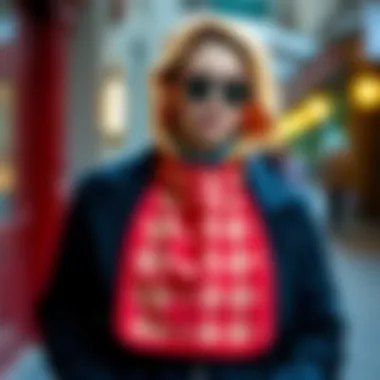
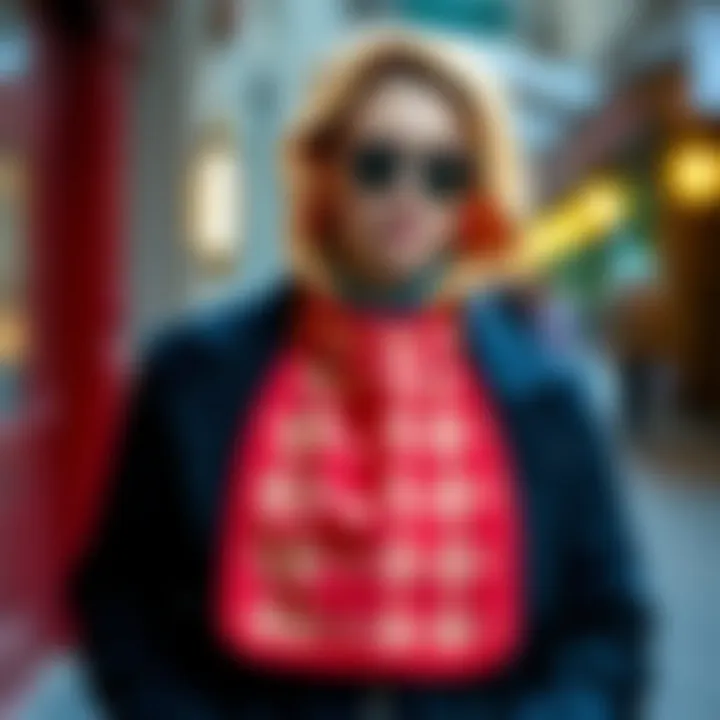
The design of fashion bibs often carries echoes of the cultural contexts from which they emerge. Various traditions and artistic movements infuse creativity into the choices of fabric, color, and embellishments. For example, the use of intricate embroidery often pays homage to cultural craftsmanship, drawing on techniques passed down through generations. Different regions influence designs in profound ways. Think of the bold patterns of African textiles or the minimalist aesthetics found in Scandinavian fashion; these elements often find their way into modern bib designs. The blending of these aesthetic influences contributes to the contemporary bib's versatility while also celebrating its roots in various cultures.
Global Styles and Adaptations
As fashion bibs traverse borders, they inevitably adapt and morph in shape, style, and purpose. Globalization has ushered in a melting pot of styles, enabling individuals to blend traditional elements with modern trends. In Japan, for instance, the bento inspiration translates to bibs that are functional and stylish, often emphasizing practicality without sacrificing aesthetic appeal. In contrast, Western interpretations may prioritize chicness, opting for bold colors and unique cuts.
The high street is now a reflection of global fashion influences; styles from Brazil, India, and beyond make their mark, leading to innovative iterations that align with local tastes while retaining an international flair. Fashion bibs not only adapt but can also influence global fashion currents, creating trends that resonate across continents.
Fashion Bibs in Popular Media
Popular media plays an undeniable role in shaping perceptions and styles around fashion bibs. From television shows that parade characters in fashionably crafted bibs to influencers on social media platforms showcasing diverse styling techniques, these portrayals affect consumer preferences and trends. Iconic figures, like Rihanna or Zendaya, have been spotted donning bibs that spark conversation, leading to public fascination and a renewed interest in this traditionally utilitarian garment.
Moreover, fashion editorial shoots frequently utilize bibs to signify statements about modernity and identity. The influence of this media exposure boosts the fashion bib from a mere accessory to a symbol of cultural significance. It’s no longer just about wearing a bib; it’s about the story behind the fabric and the statement it makes about the individual.
"Fashion informs us about our world; it is a storytelling medium, speaking of identity, culture, and intention."
The confluence of cultural influence, global adaptation, and the media's portrayal of fashion bibs enhances their relevance in contemporary wardrobes. By delving into these areas, we gain richer insights into not just the bib itself, but also the world it inhabits and the people who wear it. Through understanding these aspects, enthusiasts can appreciate the profound layers that inform what may seem a simple garment.
Sustainability and the Fashion Bib
The conversation around sustainability in fashion has gained momentum over recent years, with consumers becoming increasingly aware of the ecological footprint of their apparel choices. The fashion bib, once primarily a functional garment, has evolved into a statement piece that embodies not just style, but also values of environmental stewardship. This shift highlights the importance of sustainability in fashion bib design and production, showcasing how modern consumers are keen on making choices that reflect their beliefs. The integration of sustainable practices not only addresses the environmental challenges but also promotes ethical consumption.
Eco-Friendly Production Methods
Employing eco-friendly production methods is a cornerstone in making fashion bibs more sustainable. Designers and manufacturers are shifting towards practices that reduce waste and minimize the carbon footprint associated with garment production. This can include:
- Waterless dyeing technologies, which significantly reduce the amount of water needed to produce vibrant colors.
- Cut-and-sew techniques that optimize fabric use, ensuring minimal leftovers.
- Renewable energy resources in factories, which lower greenhouse gas emissions through the use of solar and wind power.
By adopting these production practices, designers not only mitigate environmental harm but also attract a clientele that values sustainability. Shoppers today often seek transparency in manufacturing processes, and being able to communicate these eco-friendly techniques adds to a brand’s appeal.
Sustainable Material Choices
When it comes to sustainable fashion bibs, the choice of material plays a critical role. Modern designs increasingly utilize fabrics that are not only stylish but environmentally friendly. Some notable options include:
- Organic cotton: Grown without pesticides or synthetic fertilizers, organic cotton significantly reduces soil degradation and water pollution.
- Recycled materials: Using fabrics made from recycled plastics or textiles helps divert waste from landfills while lessening the demand for new resources.
- Hemp and Tencel: Both of these options are renowned for their low environmental impact. Hemp requires far less water and chemicals compared to conventional fibers. Tencel, derived from sustainably sourced wood pulp, is biodegradable and produced in a closed-loop process that recycles water and solvents.
Choosing these fabrics not only champions responsible sourcing but also caters to consumers who are more apt to invest in high-quality, sustainable pieces.
The Emerging Role of Second-Hand Fashion
The second-hand fashion market has rapidly gained traction as an essential component of sustainability in the clothing industry, including the realm of fashion bibs. Opting for pre-owned items not only prolongs the life cycle of clothing but also supports the circular economy. Here are a few points to consider:
- Conscious Consumption: Purchasing second-hand bibs allows consumers to make choices that reduce waste and lessen the demand for fast fashion production.
- Cost Efficiency: Second-hand pieces are often more affordable, making sustainable fashion accessible for a broader audience. This is particularly appealing for unique styles or vintage bibs that add character to any outfit.
- Supporting Charitable Causes: Many thrift stores and second-hand shops support local charities, meaning that each purchase can lead to a positive impact on the community.
Future Trends in Fashion Bibs
The fashion landscape is continuously evolving, and the fashion bib is no exception. As we peer into the future, this section will shed light on how bibs are positioning themselves as more than just a fleeting trend but as a wardrobe essential. This emphasis on future trends provides an understanding of the innovative approaches designers and brands are adopting, which can influence not only individual wardrobes but also larger fashion movements.
Innovative Designs and Technologies
The next wave of fashion bibs will likely center around innovative designs and the integration of technology. Designers are experimenting with unique cuts, functional elements, and wearable tech. From adjustable straps that cater to different body types to built-in pockets for practicality, the future of bibs looks tailored and convenient.
For instance, imagine a bib made from high-tech fabrics that naturally regulate temperature, providing comfort while maintaining style. These advancements not only elevate the aesthetic but also offer practical benefits— merging fashion with function seamlessly. Moreover, augmented reality (AR) could play a role in the shopping experience, allowing consumers to visualize how different styles might look on them before making a purchase.
Fashion Bibs in Street Style
Street style continues to shape trends in an organic manner, often leading the charge for what’s next in mainstream fashion. The fashion bib has found a home in this scene, with an increasing number of individuals styling them for daily wear. Influencers and everyday fashion enthusiasts have taken to layering bibs over several garments, creating a unique contrast that speaks to personal style.
This trend encourages a playful approach to fashion where bibs can be paired with oversized tees, sleek turtlenecks, or even casual shorts. Moreover, the casual vibe of streetwear offers a platform for bibs to be elevated in color, pattern, and print, making bold statements in otherwise laid-back looks. The accessibility and versatility of street style allow the fashion bib to adapt more readily to changing tastes, which can help it endure through variations in seasonal trends.
Predictions for Upcoming Seasons
As we look ahead, several predictions paint a captivating view of the future for fashion bibs. One significant trend is the rise of customizations and bespoke options. As personalization becomes more prevalent—a nod to individual expression—brands might offer consumers the chance to design their own bibs, choosing fabric type, cut, and embellishments. This not only creates a deeper connection between the wearer and the garment but also highlights the unique perspectives that each individual brings to fashion.
Increased awareness of sustainable fashion will likely influence future designs as well. Expect to see more fashion bibs crafted from organic cotton, recycled materials, and other eco-friendly options. As consumers demand transparency in production, companies emphasizing sustainability may stand out in an increasingly crowded market. The fusion of ethics with style will define the direction bibs take in the seasons to come.
"Fashion is forever changing, and the bib is becoming more than a trendy piece—it’s a canvas for creativity and sustainability."
As we navigate the fast-paced realm of fashion, keeping an eye on the evolving nature of the fashion bib will not only equip consumers with knowledge but also inspire them to experiment with their style. The coming trends promise to deliver an exciting chapter in the narrative of the fashion bib.



